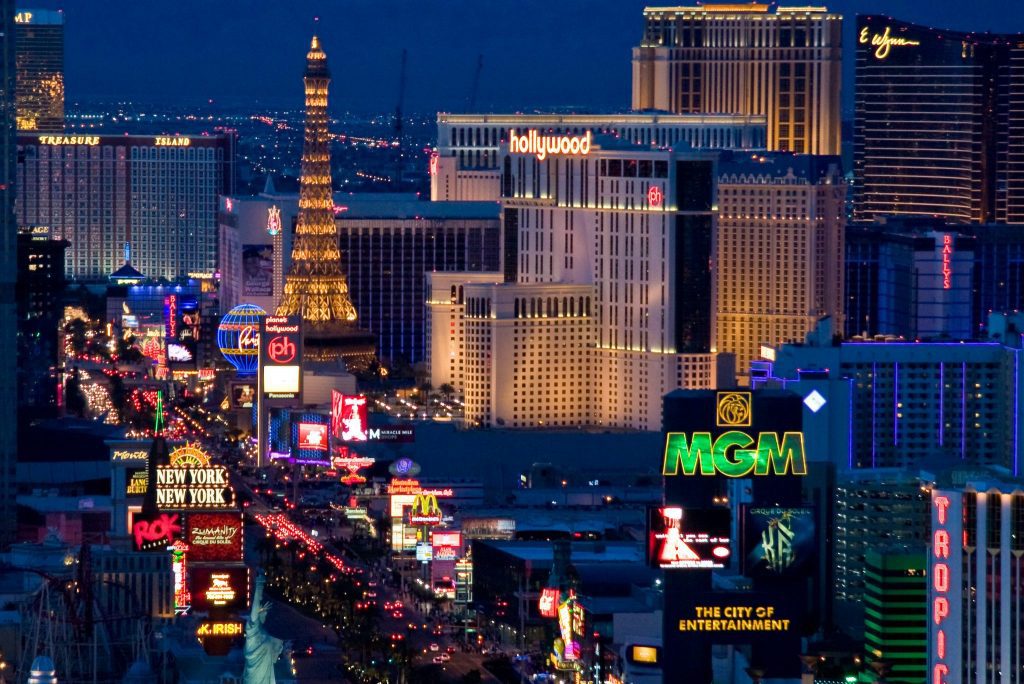Skift Take
Loyalty is big business. Presumably, MGM Resorts replaced its old program with a new one to juice revenues. But it's not exactly clear why this program is better than the old one.
MGM Resorts can pinpoint more than 80 percent of its gaming revenue in Las Vegas to individual players, allowing it to direct offers to its most lucrative customers. But non-gamblers spend a lot of money in Las Vegas, too, and company executives said Wednesday they can match less than 40 percent of spending on shopping, restaurants, and entertainment to individuals.
To better track that spending, the company recently alter its loyalty program to have better visibility into those customers. On February 1, MGM Resorts turned what was M life Rewards loyalty scheme into a new program called MGM Rewards.
“The more broad change with MGM rewards is recognizing retail spend and making it more robust by recognizing people,” CEO Bill Hornbuckle said on the company’s fourth quarter earnings call. “Collectively as an industry and as a business, we do an amazing job with personalized guest service recognizing the high end. We’re trying to extend that down to the next big tranche of people, in the millions at this point.”
Just how much revenue this scheme will produce is not clear. But chief financial officer Jonathan Halkyard said that if done right, the rewards will be material.
“This is a massive business for MGM Resorts,” he said. “It’s a huge opportunity for us to grow share within those customer spend areas.”
Tried-and-True Strategy
Few of the strategies for loyalty outlined on the call represent outside-the-box thinking. Instead, MGM Resorts appears to seek to keep pace with other travel industry firms that increasingly know more about their customers than ever. MGM wants to offer more customers personalized offers.
“Our goal is to identify and efficiently acquire high-value gaming and non-gaming customers by optimizing our target marketing, improving on-property service and improving new experiences for those guests throughout their visit,” Hornbuckle said.
To be sure, the company sees opportunity in further rewarding gaming customers, particularly if it can improve its technology so it can better track them. Hornbuckle spoke twice about the need to better reward Bet MGM customers, who use the online platform to place sports bets. Hornbuckle said about 42 percent of new enrollees in the loyalty program are coming from the Bet MGM platform, but suggested it has been tough to convert them into Las Vegas hotel guests.
“It needs to be fully integrated, where it’s a smooth transition and transaction for a customer to take gaming activity on Bet MGM, get recognized, get rewarded and get on their phone some in some way, shape, or form an opportunity to take advantage of something at a brick and mortar property,” he said.
Today, he said, that requires a clunky, two-step process, “that we want to see go away.”
Who Does This Really Reward
For all the discussion about retail and other spending, Gary Leff, a loyalty expert and blogger, said he suspects MGM Resorts is focusing more on gamers with this new scheme. He said, in the past, non-gamers could earn some of the most lucrative rewards in the program. Now, he said, it is more challenging.
“The elite program is very much out of reach for anyone that isn’t primarily a gambler,” Leff said. “The program is richer overall but very much moves away from the trend in recent years of using the loyalty program to attract a broad non-gambling clientele.”
The Numbers
For the fourth quarter, MGM resorts reported net income of $131 million on revenues of roughly $3 billion. For full year 2021, the company reported net income of $1.3 billion in 2021, though that included a $1.6 billion net gain related to the “consolidation” of CityCenter. In July, MGM Resorts bought out a partner in the CityCenter development and then sold it to Blackstone.
Have a confidential tip for Skift? Get in touch
Tags: earnings, gaming, loyalty, mgm resorts
